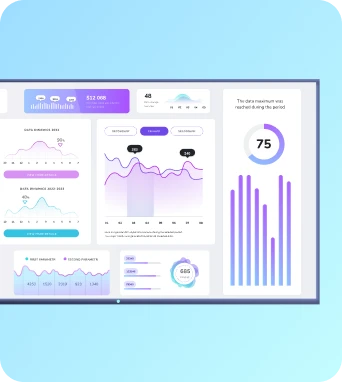BrightSign HD1024
The BrightSign HD1024 is a compact commercial media player designed for professional digital signage. It supports full 1080p60 video playback, secure boot and networking features, and is built for reliable 24/7 operation. Suitable for small to medium installations where consistent performance and centralised control are required.
BrightSign HD1024
Hardware and capabilities
The BrightSign HD1024 is built around a compact PCB and enclosure designed for deployment behind displays or in AV cabinets. Its core playback capability is targeted at 1080p60 H.264 video, ensuring smooth motion and broad codec compatibility for typical signage content. The hardware includes a full-size HDMI output for direct connection to commercial screens, a Gigabit Ethernet port for reliable networked content delivery, and a microSD card slot for local storage. Models in the BrightSign HD line often include features such as serial or GPIO ports for basic I/O integration, allowing the HD1024 to trigger external devices or respond to sensors in interactive installations. The unit is fanless and engineered for continuous operation, reducing maintenance and making it suitable for environments where quiet, unattended operation is required. From an operational standpoint, the HD1024 emphasises robustness and predictability. It supports secure boot and signed firmware, which helps prevent unauthorised code from running on the device and reduces the attack surface in public-facing deployments. Local storage via microSD permits caching and offline playback if the network is interrupted, while the GbE connection supports fast content transfers and remote management. For digital signage managers, the ability to combine local reliability with networked control simplifies deployment planning: content can be distributed centrally yet remain playable even if connectivity is temporarily lost. Physical considerations such as VESA-compatibility and compact dimensions let installers conceal the player behind screens or within cabinet spaces without significant additional infrastructure.
Integration, management and best practices
Integrating the BrightSign HD1024 into a managed signage ecosystem requires attention to content preparation, network architecture and device provisioning. Content should be encoded and tested at the native resolution and bitrate to avoid runtime scaling or dropped frames; the HD1024 performs best with well-encoded H.264 video, optimised image assets and concise playlists. On the network side, ensure devices have stable IP addressing and access to required ports for content synchronisation and remote monitoring. Where multiple players are deployed across sites, centralised management through a platform such as Fugo removes manual overhead: administrators can push schedules, update assets and monitor device health without site visits. Fugo adds value by offering content templates, role-based access and playlog reporting suited to enterprise rollouts. Security and operational resilience are important considerations. Use secure network segments or VLANs for media players in public venues and apply network-level controls such as firewall rules to limit unnecessary inbound traffic. Enable signed firmware and follow a controlled update process; test firmware or configuration changes on a small pilot group before wide deployment to avoid service disruption. For large networks, adopt naming conventions and maintain an inventory of serial numbers and physical locations to speed troubleshooting. Accessories such as powered HDMI extenders, surge protection and lockable enclosures can reduce failure points in harsh environments. Regularly review logs and alerting within your management platform so that issues like storage saturation, failed updates or network interruptions are caught early and resolved before they impact content delivery.
Operational considerations with Fugo
Keep the learning going...
Brightness uniformity
Brightness uniformity describes the evenness of luminance across a display, measured as the relative difference between the brightest and darkest areas. It is a practical quality metric for TV dashboards and digital signage that influences readability, perceived colour consistency and the integrity of brand assets across a signage network.
BrightSign digital signage
BrightSign digital signage refers to BrightSign's line of dedicated hardware media players and associated OS/software used to deploy, schedule and manage content on screens. Known for reliability, solid-state performance, HTML5 support, interactive features and BrightAuthor/BrightSign Network management, widely used in retail, corporate, transportation and hospitality environments.
BrightSign HD224
A compact, budget-friendly Full HD digital signage media player from BrightSign designed for simple, reliable local or networked content playback.



